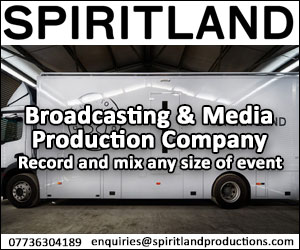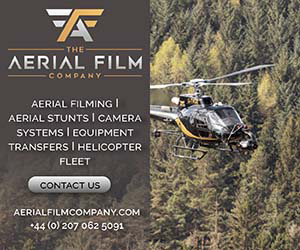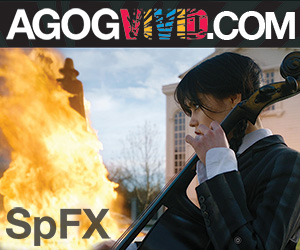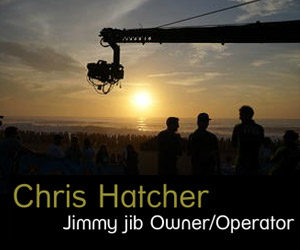Broadcast News
20/08/2014
Purpose-Built News And OB Fiber Systems Save Time And Money
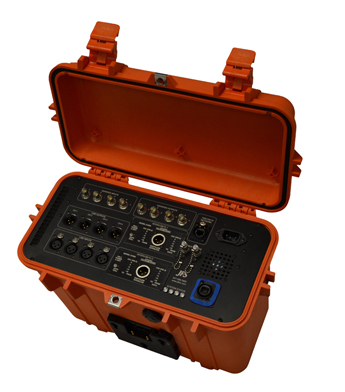
Much has been written about portable fiber systems, and over the past few years, more challenging OB signal demands have made these systems an almost essential part of most broadcasts. However, simply putting fiber gear into a road case does not make a portable system, says Yohay Hahamy, President and CEO, Joseph Electronics.
Transporting uncompressed HD signals over long distances absolutely requires fiber. In order to move high-bandwidth signals over copper cable, you would need good coax cable with perfectly terminated BNCs, and even then, you might only be able to go 150 meters. With various types of multiplexing, we can easily add additional signals - such as analog and digital audio, intercom, data, and Ethernet - onto the fiber.
In doing so, fiber systems can handle all signal requirements, including for announcer booths or remote studios.
The Telecast Viper system set the standard for portable point-to-point fiber transport more than 15 years ago, and hundreds of those systems are still in use today. Ideally, portable fiber systems must fulfill three basic requirements. First, the outside case and inside components must be able to survive the harsh world of outside broadcast and electronic newsgathering (ENG). That means that the outer case must be durable and have a lid of some kind to protect connectors from the elements and extreme heat and cold. Next, the systems should have multiple power options to be able to operate on local power, remote power from a hybrid copper/fiber cable (distance limited) and/or a standard broadcast battery. Finally, they must have some degree of field customisation of signals and/or directions.
These are basic design considerations, but most users deal regularly with specific signals for specific requirements. For that reason, purpose-built systems, which can be customised at the factory, represent the ideal combination of ruggedness and convenience. These systems are built with the exact signals that a user needs, so the only change required in the field is to swap the directions of signals.
In ENG, the first crew to get to the scene wins. When the news truck arrives, many factors determine how close it can park to the action. Then there are other unknowns: How is the RF environment? Will the wireless equipment work reliably? A copper solution might include heavy multicore camera cables plus mic, intercom, and maybe even power cables for the camera and monitors. With a fiber solution, all of the signals travel on a single cable - even the power, if needed - so that the remote crew is completely self-contained.
Because a single cable connects the van to the shoot location, troubleshooting is easy, and setup and tear down are extremely fast. And in a fiber solution, the signals all look great and are completely free of RF or EMI interference.
For ENG, speed and convenience are the major reasons to use fiber. In outside broadcast, there are two more. First, fiber cables weigh significantly less than copper, and they are signal-agnostic. No matter what type of signal - video, audio, data, or intercom - it all travels on the same fiber cable. Given the weight limits on OB vans, fiber has obvious advantages. The other big advantage is distance. Fiber can transport signals over much longer distances than copper, which means fiber really shines on large-scale events like golf, auto racing, or downhill skiing, where signals are spread out over vast areas.
Fiber systems have long been perceived as too expensive, and many of the early systems were. Not only that, but early fiber systems had limited customisation options, so customers had to make concessions on the signal counts or, worse, pay for signals they would never use. Today’s best systems are completely customisable so that you pay only for what you need, and often you can get extra audio or video paths to make the system work across multiple broadcast scenarios.
Another big complaint about fiber systems was poor intercom performance. That issue has been solved with great-sounding, easy-to-use interfaces built specifically for the challenges of two-wire, powered intercoms.
Fiber systems have evolved from novelty to mainstream, and the barriers to using them have largely disappeared. Today they have far more signal-carrying capacity, are much easier to use, and are far less expensive than the systems of the past. At Joseph Electronics and Joseph Fiber Solutions, we have been putting fiber systems together for broadcasters for nearly 10 years. We draw from more than 75 years of internal broadcast experience and supply hardware from the most respected fiber vendors in the broadcast industry.
The article is also available to read in BFV online.
(IT/CD)
Transporting uncompressed HD signals over long distances absolutely requires fiber. In order to move high-bandwidth signals over copper cable, you would need good coax cable with perfectly terminated BNCs, and even then, you might only be able to go 150 meters. With various types of multiplexing, we can easily add additional signals - such as analog and digital audio, intercom, data, and Ethernet - onto the fiber.
In doing so, fiber systems can handle all signal requirements, including for announcer booths or remote studios.
The Telecast Viper system set the standard for portable point-to-point fiber transport more than 15 years ago, and hundreds of those systems are still in use today. Ideally, portable fiber systems must fulfill three basic requirements. First, the outside case and inside components must be able to survive the harsh world of outside broadcast and electronic newsgathering (ENG). That means that the outer case must be durable and have a lid of some kind to protect connectors from the elements and extreme heat and cold. Next, the systems should have multiple power options to be able to operate on local power, remote power from a hybrid copper/fiber cable (distance limited) and/or a standard broadcast battery. Finally, they must have some degree of field customisation of signals and/or directions.
These are basic design considerations, but most users deal regularly with specific signals for specific requirements. For that reason, purpose-built systems, which can be customised at the factory, represent the ideal combination of ruggedness and convenience. These systems are built with the exact signals that a user needs, so the only change required in the field is to swap the directions of signals.
In ENG, the first crew to get to the scene wins. When the news truck arrives, many factors determine how close it can park to the action. Then there are other unknowns: How is the RF environment? Will the wireless equipment work reliably? A copper solution might include heavy multicore camera cables plus mic, intercom, and maybe even power cables for the camera and monitors. With a fiber solution, all of the signals travel on a single cable - even the power, if needed - so that the remote crew is completely self-contained.
Because a single cable connects the van to the shoot location, troubleshooting is easy, and setup and tear down are extremely fast. And in a fiber solution, the signals all look great and are completely free of RF or EMI interference.
For ENG, speed and convenience are the major reasons to use fiber. In outside broadcast, there are two more. First, fiber cables weigh significantly less than copper, and they are signal-agnostic. No matter what type of signal - video, audio, data, or intercom - it all travels on the same fiber cable. Given the weight limits on OB vans, fiber has obvious advantages. The other big advantage is distance. Fiber can transport signals over much longer distances than copper, which means fiber really shines on large-scale events like golf, auto racing, or downhill skiing, where signals are spread out over vast areas.
Fiber systems have long been perceived as too expensive, and many of the early systems were. Not only that, but early fiber systems had limited customisation options, so customers had to make concessions on the signal counts or, worse, pay for signals they would never use. Today’s best systems are completely customisable so that you pay only for what you need, and often you can get extra audio or video paths to make the system work across multiple broadcast scenarios.
Another big complaint about fiber systems was poor intercom performance. That issue has been solved with great-sounding, easy-to-use interfaces built specifically for the challenges of two-wire, powered intercoms.
Fiber systems have evolved from novelty to mainstream, and the barriers to using them have largely disappeared. Today they have far more signal-carrying capacity, are much easier to use, and are far less expensive than the systems of the past. At Joseph Electronics and Joseph Fiber Solutions, we have been putting fiber systems together for broadcasters for nearly 10 years. We draw from more than 75 years of internal broadcast experience and supply hardware from the most respected fiber vendors in the broadcast industry.
The article is also available to read in BFV online.
(IT/CD)
Top Related Stories
Click here for the latest broadcast news stories.
19/03/2024
MultiDyne Video & Fiber Optic Systems To Unveil New Series Of openGear Solutions
MultiDyne Video & Fiber Optic Systems will introduce a new series of openGear solutions at NAB Show 2024 that will help customers build stronger bridg
MultiDyne Video & Fiber Optic Systems To Unveil New Series Of openGear Solutions
MultiDyne Video & Fiber Optic Systems will introduce a new series of openGear solutions at NAB Show 2024 that will help customers build stronger bridg
24/08/2022
MultiDyne Video & Fiber Optic Systems To Return To IBC 2022
MultiDyne Video & Fiber Optic Systems returns to IBC with power extension in mind for camera operators seeking to free themselves from the limitations
MultiDyne Video & Fiber Optic Systems To Return To IBC 2022
MultiDyne Video & Fiber Optic Systems returns to IBC with power extension in mind for camera operators seeking to free themselves from the limitations
09/07/2021
AJA Video Systems Expands openGear® Fiber To 12G-SDI Converters
AJA Video Systems has expanded its lineup of openGear® compatible 12G-SDI Fiber Converters with a pair of new OG-FiDO 12G cards for receiving signals
AJA Video Systems Expands openGear® Fiber To 12G-SDI Converters
AJA Video Systems has expanded its lineup of openGear® compatible 12G-SDI Fiber Converters with a pair of new OG-FiDO 12G cards for receiving signals
18/09/2012
Telecast Fiber Systems Integrated Into Miranda Brand
Belden, provider of signal transmission solutions for mission-critical applications, has announced that its Telecast Fiber Systems brand is being inte
Telecast Fiber Systems Integrated Into Miranda Brand
Belden, provider of signal transmission solutions for mission-critical applications, has announced that its Telecast Fiber Systems brand is being inte
28/03/2012
Telecast Fiber Systems Announces Terrapin
Telecast Fiber Systems has announced the launch of the Terrapin FTR-D6, a 3Gb/s fiber optic video transceiver that also incorporates a six-output dist
Telecast Fiber Systems Announces Terrapin
Telecast Fiber Systems has announced the launch of the Terrapin FTR-D6, a 3Gb/s fiber optic video transceiver that also incorporates a six-output dist
17/05/2011
Telecast Fiber Systems Announces New Thor Product Family
Telecast Fiber Systems has announced its new Thor family of fibre optic interfaces for conversion and handling of DVI signals in a wide range of broad
Telecast Fiber Systems Announces New Thor Product Family
Telecast Fiber Systems has announced its new Thor family of fibre optic interfaces for conversion and handling of DVI signals in a wide range of broad
01/09/2010
Telecast Fiber Systems Launches CopperHead 3050
Telecast Fiber Systems has announced the launch of the CopperHead 3050, the newest member of the company's award-winning CopperHead Series 3000 family
Telecast Fiber Systems Launches CopperHead 3050
Telecast Fiber Systems has announced the launch of the CopperHead 3050, the newest member of the company's award-winning CopperHead Series 3000 family
15/10/2008
Telecast Fiber Systems Wins STAR Award
Telecast Fiber Systems, a leading provider of portable and fixed fiber optic systems for television broadcast production, has announced that its new C
Telecast Fiber Systems Wins STAR Award
Telecast Fiber Systems, a leading provider of portable and fixed fiber optic systems for television broadcast production, has announced that its new C
20/04/2006
Telecast Fiber Systems showcase new module for Viper II platform
At NAB2006 Telecast Fiber Systems will showcase a new module set for the company's popular Viper II fiber optic video/audio platform. Telecast's new 5
Telecast Fiber Systems showcase new module for Viper II platform
At NAB2006 Telecast Fiber Systems will showcase a new module set for the company's popular Viper II fiber optic video/audio platform. Telecast's new 5
06/04/2004
Steve Nelson rejoins Telecast Fiber Systems
Telecast Fiber Systems has announced that Steve Nelson has rejoined the company in the role of Eastern US sales manager. Nelson was a central figure i
Steve Nelson rejoins Telecast Fiber Systems
Telecast Fiber Systems has announced that Steve Nelson has rejoined the company in the role of Eastern US sales manager. Nelson was a central figure i
02/04/2004
Telecast Fiber Systems ships DiamondBack II video multiplexer
Telecast Fiber Systems has begun shipping its new DiamondBack II fibre optic video multiplexer, which will be on display at NAB booth SU9824. Represen
Telecast Fiber Systems ships DiamondBack II video multiplexer
Telecast Fiber Systems has begun shipping its new DiamondBack II fibre optic video multiplexer, which will be on display at NAB booth SU9824. Represen
09/10/2025
Harmonic Spotlights Fiber Breakthroughs
Harmonic is bringing its powerful fiber broadband innovations and deep expertise in accelerating fiber deployments to Network X 2025 in Paris. Harmoni
Harmonic Spotlights Fiber Breakthroughs
Harmonic is bringing its powerful fiber broadband innovations and deep expertise in accelerating fiber deployments to Network X 2025 in Paris. Harmoni
11/06/2025
MultiDyne Positions VersaBrix Fiber-Optic Transport Series
MultiDyne Video & Fiber Optic Systems officially introduced itself to the ProAV market at InfoComm last year, accentuating the diverse application set
MultiDyne Positions VersaBrix Fiber-Optic Transport Series
MultiDyne Video & Fiber Optic Systems officially introduced itself to the ProAV market at InfoComm last year, accentuating the diverse application set
27/01/2025
MultiDyne Throws Down The Fiber At ISE 2025
MultiDyne Video & Fiber Optic Systems has spent decades establishing its reputation as an innovator in fiber-optic transport and connectivity for the
MultiDyne Throws Down The Fiber At ISE 2025
MultiDyne Video & Fiber Optic Systems has spent decades establishing its reputation as an innovator in fiber-optic transport and connectivity for the
11/09/2024
Evertz To Unveil Fiber X-LINK At IBC 2024
Evertz will be using the IBC 2024 platform to introduce Fiber X-LINK, the latest addition to the NEXX processing and routing solution that gives broad
Evertz To Unveil Fiber X-LINK At IBC 2024
Evertz will be using the IBC 2024 platform to introduce Fiber X-LINK, the latest addition to the NEXX processing and routing solution that gives broad









